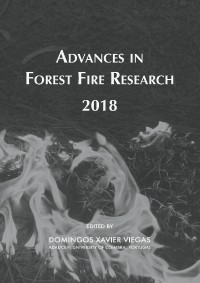Please use this identifier to cite or link to this item:
https://hdl.handle.net/10316.2/44544| Title: | Management of firebrand potential through the candling of bark fuel | Authors: | Duff, Thomas J. Richards, Penny Cawson, Jane G. |
Keywords: | burn window;embers;firebrand;fuel management;hazard;prescribed burn;torching;spotting | Issue Date: | 2018 | Publisher: | Imprensa da Universidade de Coimbra | Journal: | http://hdl.handle.net/10316.2/44517 | Abstract: | Aerially suspended fuels play an important role in forest fire behaviour. They can act as a ladder to flames, increasing the potential for crownfire, and can ignite and act as firebrands. When large accumulations of these fuels are present, wildfires may spread more rapidly, be more difficult to suppress and be more likely to impact assets such as houses. However, as these fuels are suspended above the ground, their moisture status is predominantly a function of atmospheric humidity. As a result, bark and suspended fuels may become flammable at times when the remainder of the fuel bed is too wet to burn due to high soil moisture levels. This means that these fuels can be reduced by burning when conditions are unfavourable for prescribed burning using the practice candling. Candling is the deliberate ignition of bark and other dead fine ladder fuels under conditions where surface fires are unlikely to spread. We compared the number of days available for prescribed burning and candling for a locality in South Eastern Australia and found that in the period 2012 – 2016, candling could be undertaken for an average 124 days per year, 48 days more than the window available for prescribed burning (76 days). As each accumulation of aerial fuel must be individually lit during candling, the practice is labour intensive and inefficient over large areas relative to prescribed burning, so it is best used for targeted risk reduction such as near control lines or assets. However, it can be used to reduce risk with low chance of escape in locations where prescribed burning is difficult such as the Wildland Urban Interface. The practice is applied operationally in South Eastern Australia, however to date there has been limited research into its effects on wildfire spread and intensity. Given its suitability for strategic use near highly vulnerable assets, we believe further investigation into its utility is warranted. | URI: | https://hdl.handle.net/10316.2/44544 | ISBN: | 978-989-26-16-506 (PDF) | DOI: | 10.14195/978-989-26-16-506_27 | Rights: | open access |
| Appears in Collections: | Advances in forest fire research 2018 |
Files in This Item:
| File | Description | Size | Format | |
|---|---|---|---|---|
| management_of_fireband_potential.pdf | 782.83 kB | Adobe PDF |  |
Items in DSpace are protected by copyright, with all rights reserved, unless otherwise indicated.
